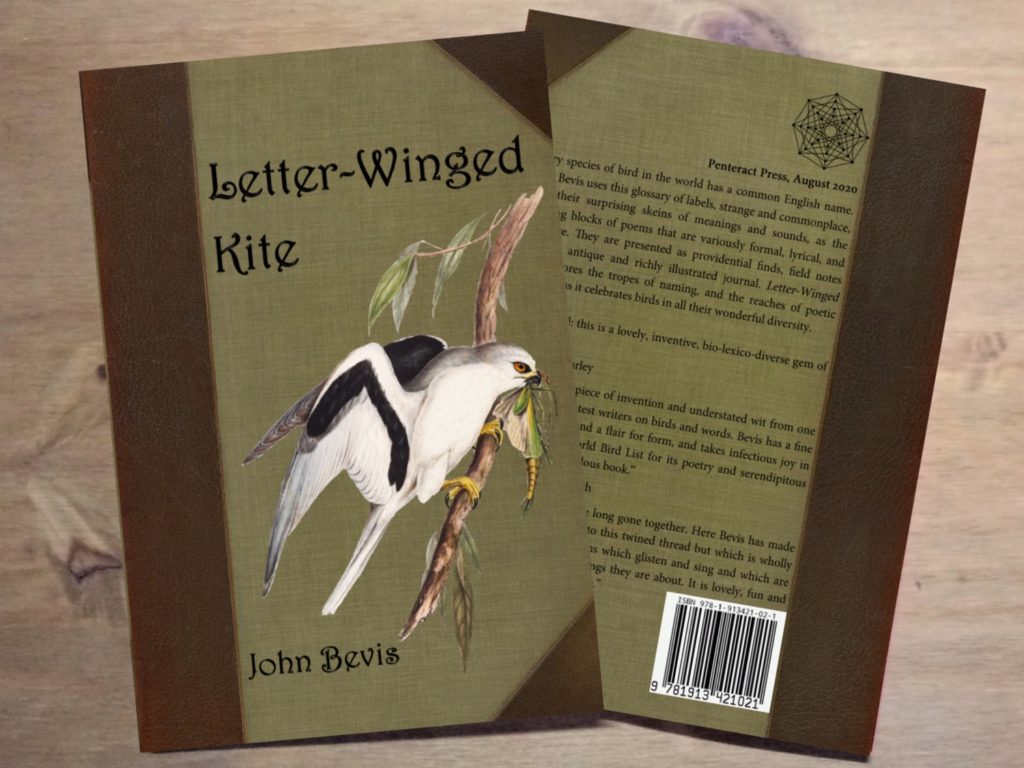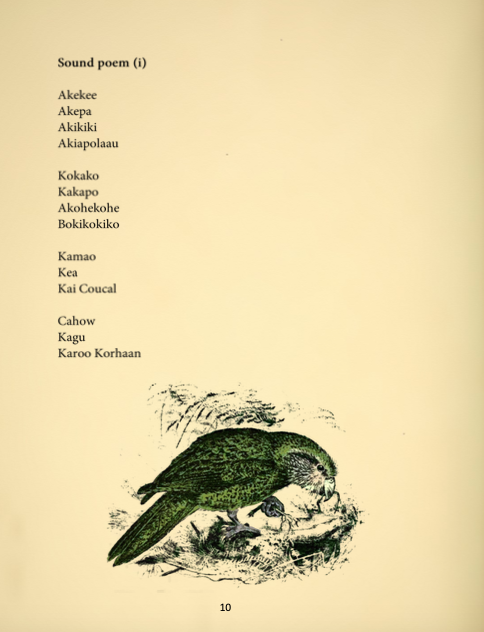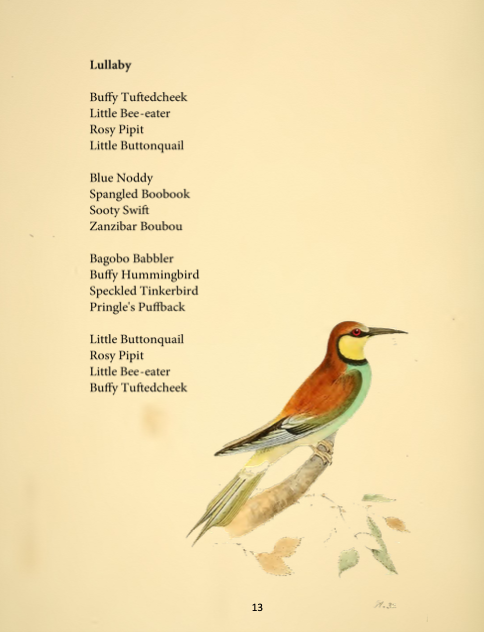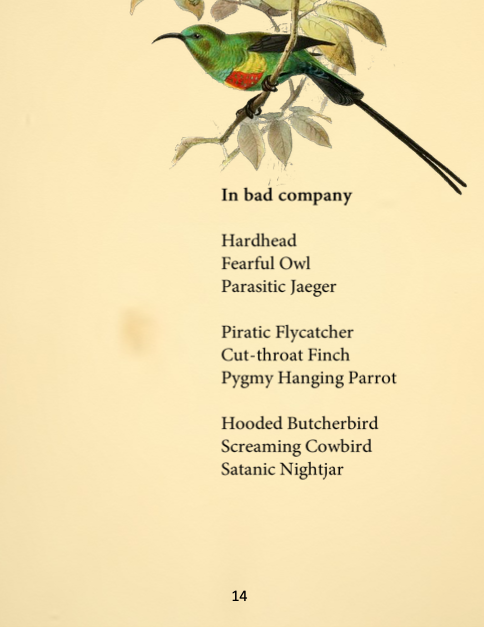Every species of bird in the world has a common English name. In Letter-Winged Kite, John Bevis uses this glossary of labels as the building blocks of poems — exploring the tropes of naming, the reaches of poetic language, and celebrating birds in all their wonderful diversity. Tim Dee reviews.

What’s in a name?
Birds and poetry have long gone together. ‘The Seafarer’, one of the first poems in English, contained field notes on seabirds from the Bass Rock. Many poets have been surprisingly acute bird watchers. John Clare’s poems inadvertently made the first record of dozens of birds for his home county of Northamptonshire. The contemporary poet, Paul Farley, is contemplating a poem for every one of the 600-plus (to date) birds on the British list.
Here John Bevis has made something that speaks to this twined thread (birds and words and bird-words) but which is wholly new as well – bird poems which glisten and sing and which are made out of very things they are about. Letter-Winged Kite is a book of poems that is made up entirely of the English common names for a good few of the world’s ten thousand species of birds.

The scientific naming of species and the subsidiary task of giving those species common names in the spoken languages of the world is a continuing labour. And an urgent one: many nameless species are becoming extinct before they have been described. But taxonomy is nowadays an under-regarded branch of biology. It is seen by some as old-fashioned, innately Victorian and clerical or neurotic and stuffy, and we remember Casaubon in Middlemarch dying at work on his Key to All Mythologies. Others see classification as limiting and colonial, as speciesist, as making possessive grabs at other life forms, and believe that the naming of parts shows only of the dead hand of capture of what is more truly a great joined and tangled concert of Earth jazz, or whatever Gaia is mixing that moment at her desk.
John Bevis allows us to see otherwise. In the animal kingdom only birds have been given the Full English; in no other order of life is there a common English name for every species. Birds, in this way, have become more familiar than other animals. Thanks to their common names they seem closer to us than, say, most of the hoverflies of the world, which exist only in Latin. Wonderful though those hoverflies may well be (and individuated by their scientific binomials), without a common name they will mostly be kept from most of us. We can’t see in Latin as we can in our mother tongue.
Imagine if somewhere on the Mascarenes, a dodo was found quietly getting on with its life. What would it do to our minds? How would we think the dodo now? How might that which we thought gone become that which we know here? All the living words we have for dodos, all the words spoken and written by those who saw them, are now hundreds of years old, and the bird shifts in our heads with the old language. It creaks with age. And all extinctions and losses will be like this. Why are dinosaurs stuck only with scientific names? Because there was no Maori to call them moa or no Dutch sailor to call them dodo.
The common names humans have given birds bring the world of avifauna towards us. We could be introduced; we become intimates or neighbours. Each common name captures the bird in a way (and it terminally did for the moas and the dodos) but it also restores each bird to its own distinctive life. How much bigger the world is seen to be when we know it contains meadow pipits, tree pipits, rock pipits and water pipits, and not just scores of little brown jobs bouncing away from us forever.

This is a serious book but a fun one too. It is funny. It is also sad. It is both deep and superficial. It is of the surface and about the surface but it prompts thoughts as to what truly lies beneath. Not one blackbird knows that it is a blackbird, though it knows what a blackbird is and lives as that rather than as, say, a blackcap. We have created all these names but the named can still live as themselves within the cage of the name. The poems here are a commentary on commentaries but also on reality and the actual hard matter (of the feathered division) of our planet as well. They should set flying ten thousand thoughts (give or take a few flightless aberrations).
Eighty years after the Dutch first encountered it on Mauritius in the early seventeenth century, the dodo was extinct. Some say dodo means stupid, others that it describes their cooing. They were flightless birds and laid their eggs on the ground. They walked towards their doom. Oliver Goldsmith wrote: ‘It is a silly simple bird…and very easily taken. Three or four dodos are enough to dine a hundred men’. Despite all the eating there are no complete dodo skeletons anywhere in the world. No one thought to keep a hold of the bones after dinner. Stuffed dodos in museums are models. The Grant Museum of Zoology at University College, London has a box of twenty or so tobacco-juice coloured bones. It looks like a tub of chicken remains after a fast-food blowout. A part skeleton found in a cave in Mauritius may yet yield dodo DNA. But at least they were known for long enough to be given a name and with that name they have lived on, just about. It is the dodo in Alice’s Adventures in Wonderland that puts on the race that ends when it says: ‘Everybody has won and all must have prizes.’

*
Letter-Winged Kite is out now, published by Penteract Press, and is available here, priced £9.00.
Tim Dee is a friend of the river. His most recent book is Greenery: Journeys in Springtime. He is at work on a book (perhaps to be called Proving Ground or perhaps Baboon Fence) that might combine his father’s ashes, his archive of thirty years of radio recordings, and his attempt to learn how to live just a mile or so north of the Cape of Good Hope.